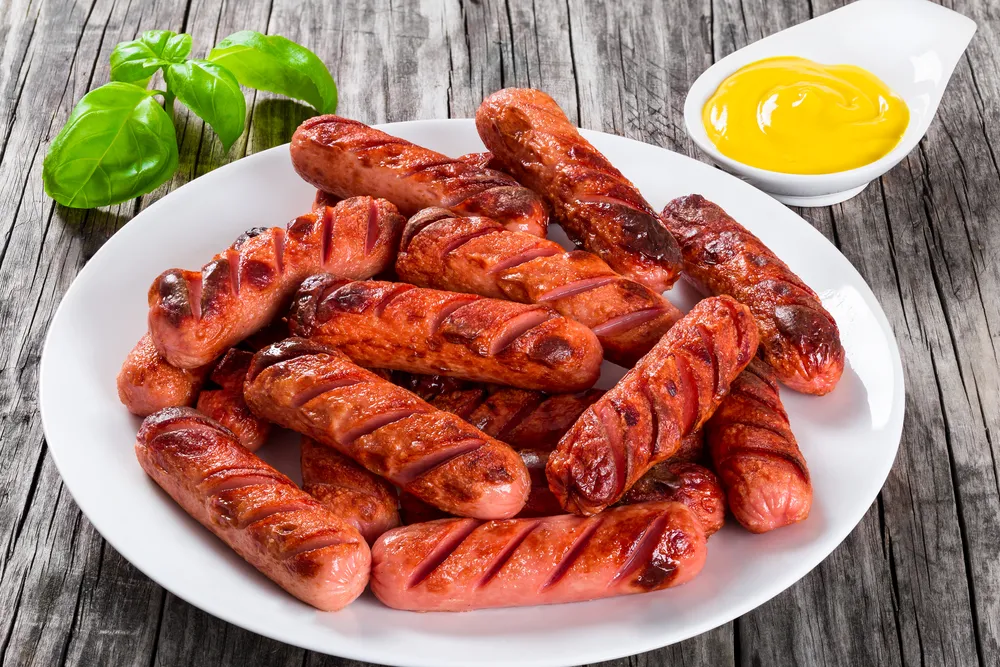A sausage is a type of meat product that is manufactured using pig, poultry, and ground meat, as well as spices, salt, and other seasonings. Today, sausages are made in a wide range of varieties and methods of preparation. The invention of the sausage began with the earliest civilizations and is the mother of all inventions. Before the invention of the refrigerator, there were various methods of sausage preservation like drying, smoking, salting, and fermentation. Salting was one of the methods most common as it was easy, quick, and suitable for some climates.
The word “sausage” comes from the Latin for salt, “SALSUS.” The syllables “SAU” and “SAL” are used to describe a variety of foods where salt is the primary ingredient. There are some other words related to sausages, such as:
- Nord-France – Saussiche
- Sausage: Britain
- Sauce
- Sauerkraut
- Salami

Mesopotamia 2600BC
Salted meat stuffed into cleaned animal intestines was used as evidence of Sausage making in Mesopotamia.
Roman Britain, 400AD
The Ancient Britains were introduced to sausage making by the Romans. The Romans made sausages by adding pepper and spices to pork, beef, goat, fish, and mutton. The Lucanian Sausages are still famous today. The Italian sausages were also the origin of British Sausages, which we can still see today.
Chinese Sausages
A Chinese type of sausage was originally invented by the Northern and Southern dynasties. The Sausage is made with goat and lamb meat, salt, green onion, ginger, pepper, and bean sauce. The modern Chinese sausage is made with a high level of lactobacilli.
The Tudor Era Sausages (725 AD)
Regional specializations emerged in 16th century Britain as a result of foreign influences. Cumberland sausages are traditionally made with 98 percent finely chopped seasoned pork with salt, black pepper, nutmeg, marjoram, thyme, and sage. The current PGI permits as little as 80% pork and the inclusion of allergens such as rusk, soya, and wheat.
It’s a sad reality, but the perception of our once-great British sausages has shifted to one of mockery. As a result, the Great British Banger-so was named because of its explosive characteristics-rose to prominence. Unfortunately, as the country began to recover from the effects of post-war food restrictions, Traditional sausage producers, led by the now-defunct
Dewhurst’s chain recognized an opportunity. As a result, inflammatory cereal additives were popular. As a result, more mockery ensued, giving rise to the less-than-flattering statement: There are three sorts of bread: white, brown, and sausages.
Unfortunately, recipes that had evolved during the Roman era were on the verge of being lost forever. Though there is evidence that bread has been used in sausages since the Middle Ages, it was done out of necessity, as a reserve for the poor in times of scarcity. The iconic British bread, or grain sausage, on the other hand, was born in post-war Britain and was here to stay—at least for a while!
Fortunately, since the 1980s, Britain’s bangers have had a rebirth, with tiny artisan manufacturers rediscovering old recipes and reintroducing them into local communities. Even though progress was initially slow due to the sheer volume of cheaper commodity sausages (mass-produced) flooding the UK market (due primarily to consumer demand for cheaper food and shareholder dividends), Furthermore, there was no regulation in place to safeguard the original sausage recipes. British sausage has become associated with bread, wheat, cereal, soya, lentils, and chemical additions.

